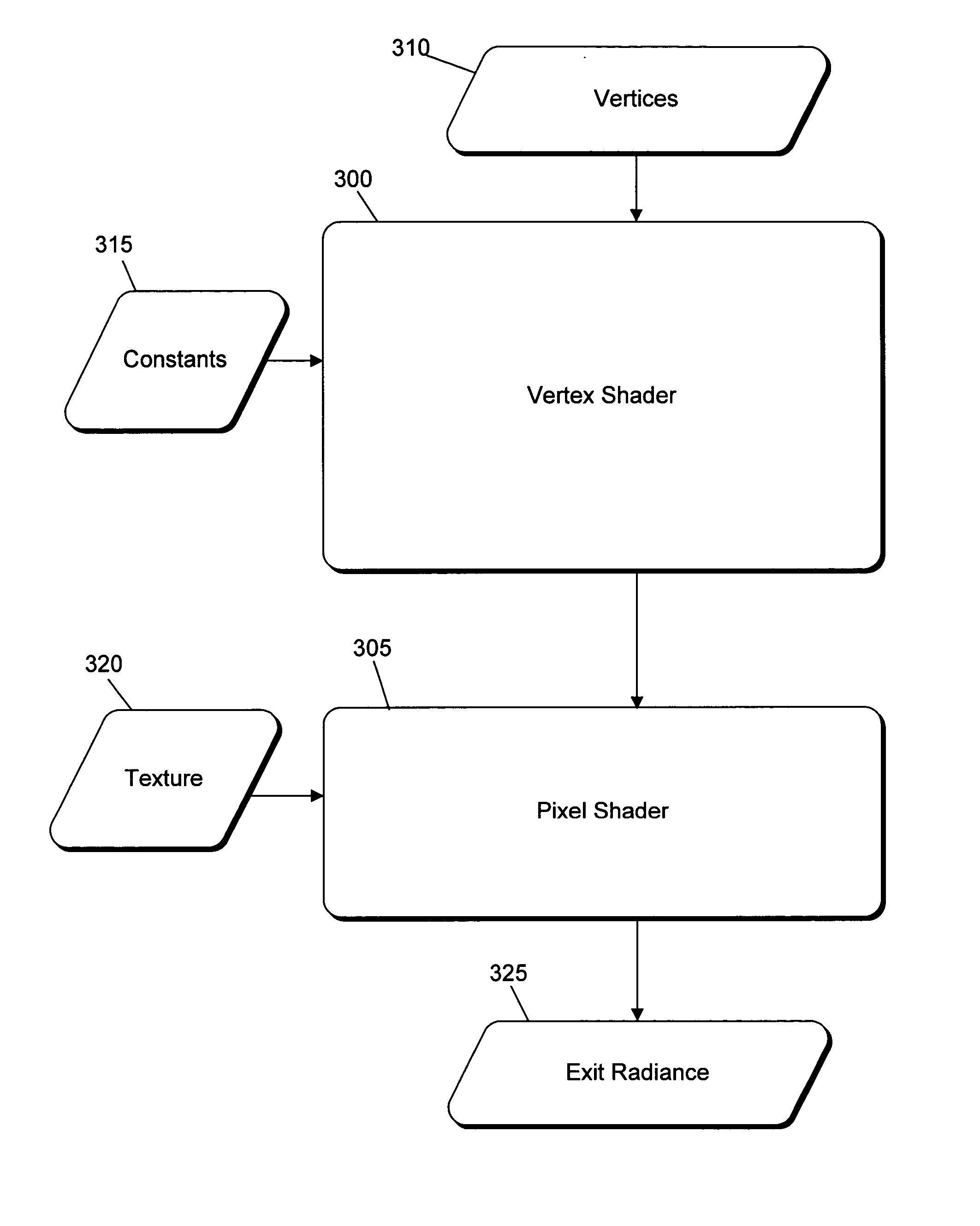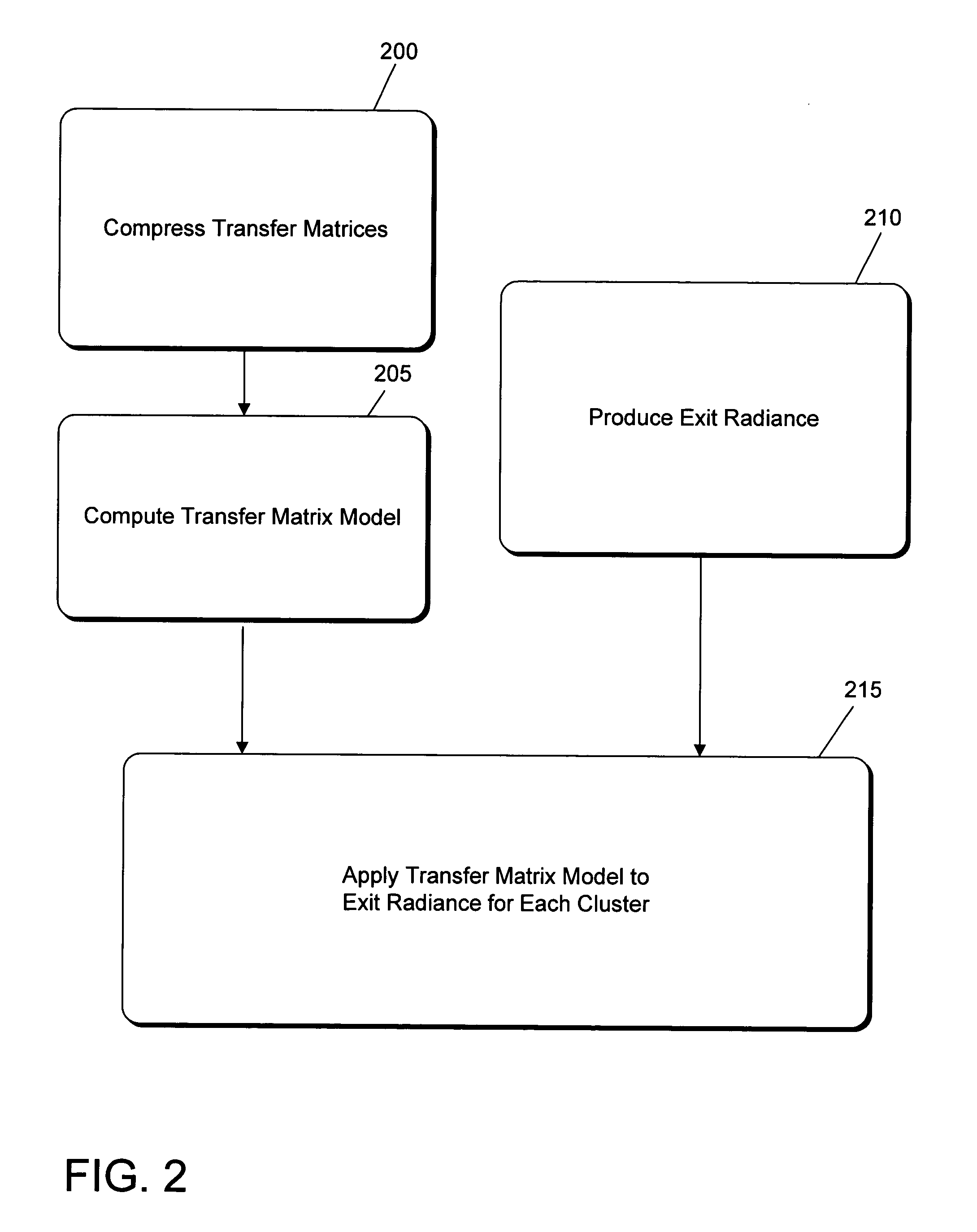Clustered principal components for precomputed radiance transfer
a technology of radiance transfer and principal components, applied in the field of computer graphics image rendering techniques, can solve problems such as real-time graphics rendering, and achieve the effects of reducing computation overhead, increasing lighting frequency, and increasing accuracy of encoded radiance functions
- Summary
- Abstract
- Description
- Claims
- Application Information
AI Technical Summary
Benefits of technology
Problems solved by technology
Method used
Image
Examples
Embodiment Construction
Clustered principal component analysis (CPCA) includes off-line, pre-computation and storage of per-vertex, source-to-exit radiance transfer matrices. Advantageously, but not limiting, the precomputed transfer matrices include the precomputed contribution of the object's subsurface scattering of distant environmental light.
Off-line processing in connection with the example operating environment of FIG. 1 includes an illumination simulation being run (not shown) over a virtual geometric model. Illumination simulation techniques, such as the Monte Carlo simulation, described further below, are known in the art and therefore are not described herein. These techniques mathematically capture how a virtual object shadows and scatters light, i.e., inter-reflects, light onto itself. Considerations for the simulation include the mesh of the object as well as its material properties. The result of the illumination simulation is recorded in radiance self-transfer data as a set of vectors fo...
PUM
 Login to View More
Login to View More Abstract
Description
Claims
Application Information
 Login to View More
Login to View More - R&D
- Intellectual Property
- Life Sciences
- Materials
- Tech Scout
- Unparalleled Data Quality
- Higher Quality Content
- 60% Fewer Hallucinations
Browse by: Latest US Patents, China's latest patents, Technical Efficacy Thesaurus, Application Domain, Technology Topic, Popular Technical Reports.
© 2025 PatSnap. All rights reserved.Legal|Privacy policy|Modern Slavery Act Transparency Statement|Sitemap|About US| Contact US: help@patsnap.com



